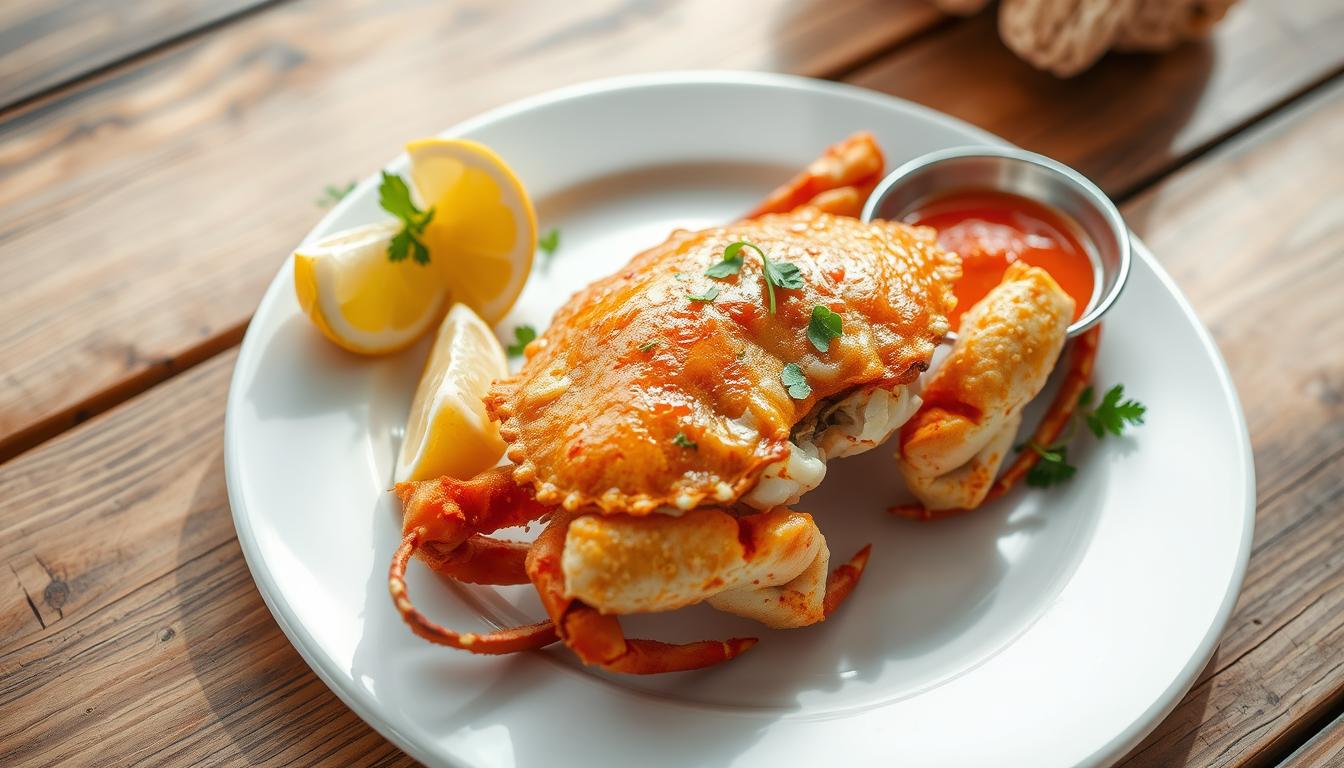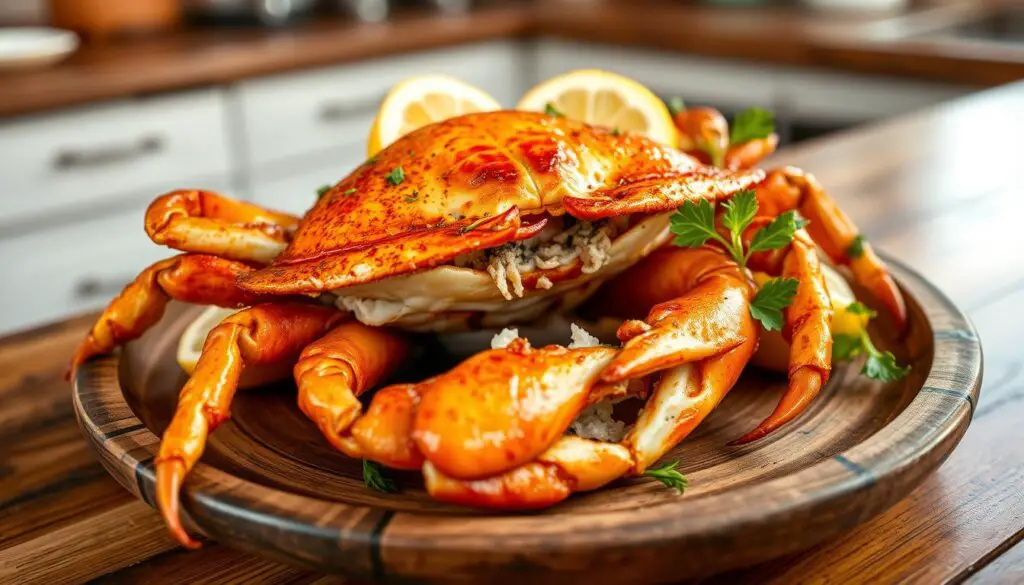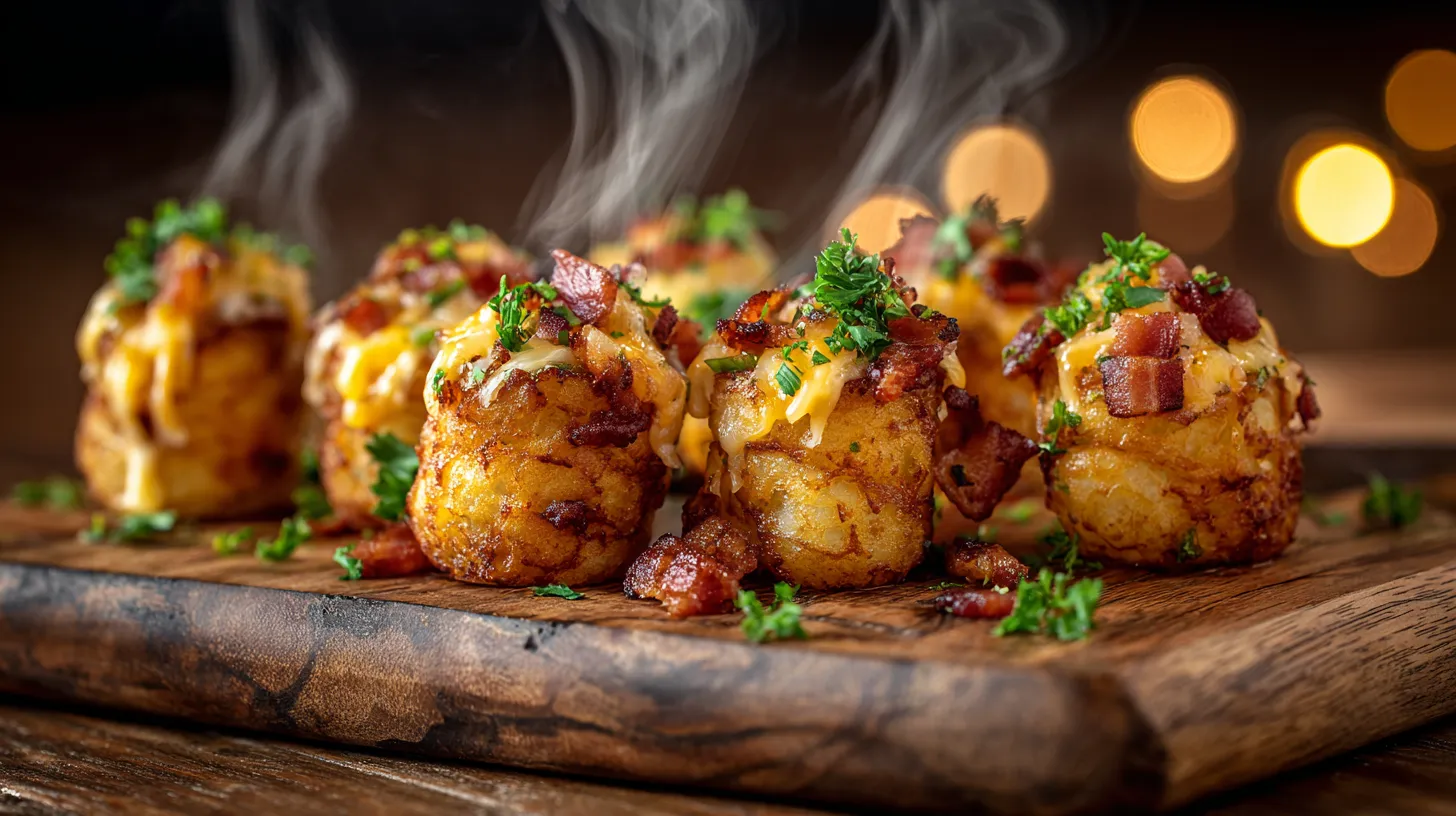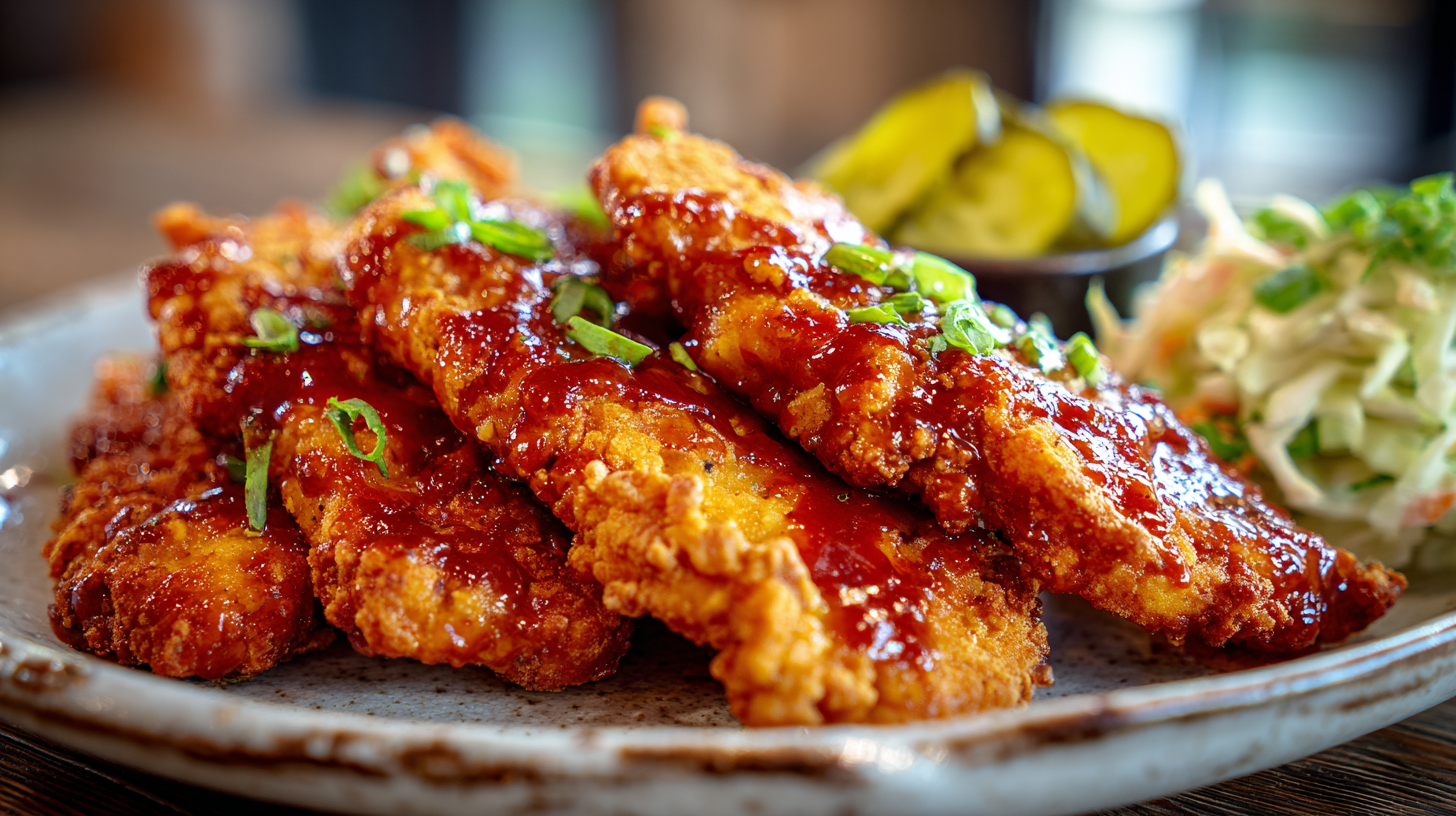Imagine biting into a fried soft shell crab. The crunch of the batter gives way to tender flesh. This Chesapeake Bay specialty is loved by many. If you want to make it at home, you’re in the right place.
We’ll show you how to prepare soft shell crabs. From molting to frying, we’ve got you covered. Whether you’re a pro or new to seafood, you’ll learn to make this dish at home.
What is a Soft Shell Crab?
Soft shell crabs are a special treat with a unique taste and feel. They are blue crabs that have just shed their hard shell. This reveals a soft shell underneath, making them perfect for eating.
Understanding the Crab’s Molting Process
Blue crabs grow by shedding their shells. This lets them fit into their new, bigger body. After shedding, they have a soft, new shell that will harden over time.
The Ideal Soft Shell Crab for Consumption
The best soft shell crab is one that has molted recently. Its new shell is soft and tender. If it’s too hard, it’s like eating a potato chip.
| Crab Shell Stage | Texture and Taste |
|---|---|
| Soft Shell | Tender and delicate |
| Paper Shell | Tough and chewy |
| Hard Shell | Inedible |
Soft shell crabs are a favorite in the Chesapeake Bay area. Crabbers catch them at the perfect time. This makes for a special and tasty meal.
Selecting Fresh Soft Shell Crabs
Freshness is key when enjoying soft shell crabs. To get the best seafood experience, buy your live crabs from trusted seafood markets or fishmongers. The crabs should be lively and moving well. Avoid those that are slow or damaged.
Soft shell crabs are usually blue crabs caught right before they molt. They are kept in tanks until they shed their hard shell. Look for crabs with a firm, papery shell, not brittle or buckled.
It’s important to cook and eat soft shell crabs quickly. Buying from trusted places ensures your dishes will be full of flavor and texture.
Cleaning and Preparing Soft Shell Crabs
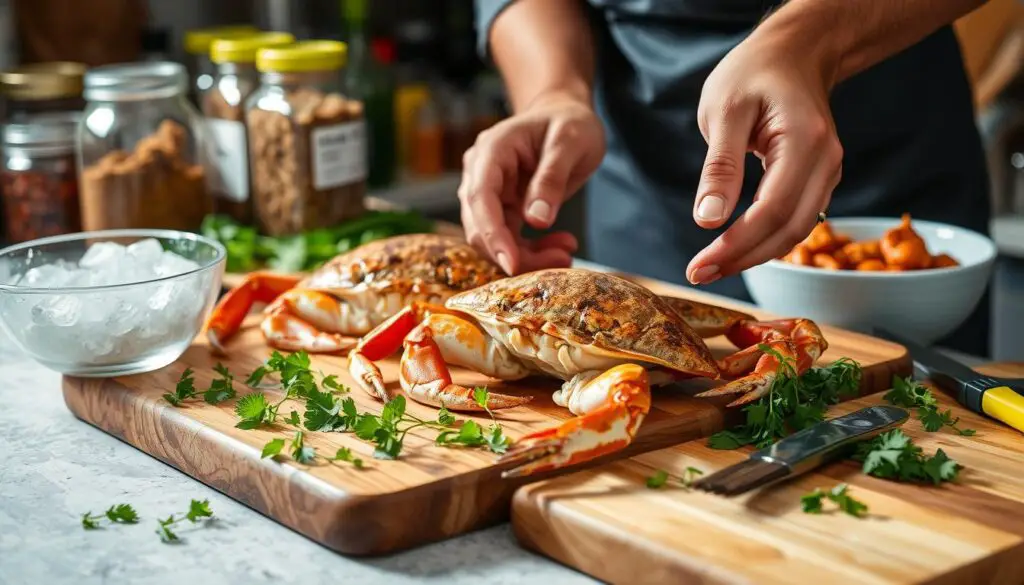
Preparing soft shell crabs is easy. Start by cutting off the gills with kitchen shears or a chef’s knife. This is on the underside of the crab. Then, lift one side of the top shell and pull out the gills.
Next, twist and pull the tail flap on the bottom side. This detaches it. Now, use shears or a knife to cut behind the crab’s eyes. Remove the face to get rid of unwanted parts.
After cleaning, rinse the crab under cold water. This removes dirt and debris. Pat the crab dry with paper towels or a clean cloth.
Rinsing and Drying the Crabs
Removing excess moisture is key. It helps the crabs cook evenly and get crispy. Use tongs to handle the crabs gently.
By following these steps, you’ll have clean, ready-to-cook soft shell crabs. Work quickly because these crabs are perishable.
How to Prepare Soft Shell Crab
Ingredients and Supplies Needed
To make tasty soft shell crabs, you need a few things. Start with fresh, high-quality soft shell crabs. You’ll also need buttermilk, salt, and Old Bay seasoning for flavor.
All-purpose flour is key for dredging the crabs. Clarified butter or oil is used for frying. Have a frying pan or deep fryer ready for cooking.
Step-by-Step Instructions for Frying
- Soak the soft shell crabs in buttermilk with salt and Old Bay seasoning. This makes the meat tender and flavorful.
- Dredge the crabs in flour, shaking off extra. The flour makes a crispy exterior when fried.
- Heat the butter or oil to 350°F to 375°F. This high heat is key for a crispy exterior and tender meat.
- Fry the crabs for 2-3 minutes on each side, until golden and crispy.
- After frying, put the crabs on a paper towel-lined plate to drain oil. This ensures a crisp finish.
By following these steps, you’ll get soft shell crabs that are crispy on the outside and tender inside. They’re perfect for a delicious meal.
Serving Suggestions for Soft Shell Crabs
Soft shell crabs are a delightful and versatile seafood dish. They can be served in many ways. You can enjoy them as an appetizer, main course, or even in a sandwich or taco.
One classic way to serve them is with a lemon wedge and tartar sauce. The lemon’s bright, tangy flavor and the tartar sauce’s creaminess go well with the crab. For a richer taste, try a butter sauce, garlic butter, or herb-infused butter.
For a more elaborate presentation, serve the soft shell crabs on pasta like linguine or angel hair. You can also put them on a creamy risotto or polenta. The crab’s delicate flavor pairs well with these starches. Or, serve them with vegetable sides like asparagus, green beans, corn on the cob, or mashed potatoes.
| Serving Suggestion | Recommended Accompaniments |
|---|---|
| Appetizer | Lemon wedges, tartar sauce, butter sauce, garlic butter, herb butter |
| Main Course | Pasta (linguine, angel hair), risotto, polenta, vegetable sides (asparagus, green beans, corn on the cob, mashed potatoes) |
| Sandwich or Taco | Soft shell crab, lettuce, tomato, onion, remoulade or aioli sauce |
When serving soft shell crabs, keep the preparation simple. Let the crab’s natural flavors shine. With a few thoughtful accompaniments, you can make this dish unforgettable.
Tips for Purchasing and Handling Live Soft Shell Crabs
Enjoying soft shell crabs requires the right handling and buying tips. Live crabs need a well-ventilated container to stay fresh. This prevents them from getting smelly.
After getting your live crabs, clean and prepare them carefully. This ensures your food is safety.
If cleaning and handling seem hard, ask your fishmonger to help. They can make your soft shell crabs kitchen-ready.
For refrigeration, cook and eat the crabs quickly for the best taste. Store them in the coldest fridge part. Keep the temperature between 32-40°F for freshness.
Soft shell crabs are delicate and short-lived. Handle them gently. Follow these tips for safe and tasty crab dishes.
How to Cook Soft Shell Crabs: Sautéed, Grilled, and More
Soft shell crabs are a tasty treat that comes only once a year. You can cook them in many ways, like sautéing, grilling, or baking. Each method gives a unique taste and texture.
To sauté them, heat a cast iron skillet or pot over medium-high. Add butter or oil and let it melt. Then, add the crabs and cook for 3 to 4 minutes on each side. Finish with lemon juice and parsley.
Grilling gives a smoky flavor. Brush the crabs with oil and grill for 2 to 3 minutes on each side. Serve with remoulade or tartar sauce.
Baking or broiling is a healthier option. Preheat the oven to 400°F. Place the crabs on a baking sheet and bake for 10 to 12 minutes, flipping halfway. They should be lightly browned.
Steaming is a gentle way to cook them. Boil water in a large pot. Place the crabs in a steamer basket and steam for 5 to 7 minutes. They should be cooked through and soft.
Use a timer and thermometer to cook them perfectly. Enjoy them as an appetizer or main dish with your favorite sides and sauces.
The Best Soft Shell Crab Seasonings and Sauces
Enjoying soft shell crabs is even better with the right seasonings and sauces. Old Bay seasoning and Cajun spice are favorites. Tartar sauce, remoulade, and aioli add a creamy, tangy touch.
Old Bay and Cajun Seasonings
Old Bay seasoning has paprika, garlic powder, salt, and pepper. It gives a warm, savory taste that goes well with soft shell crabs. Cajun seasoning, with its bold herbs and spices, is also great for seasoning.
Tartar Sauce, Remoulade, and Aioli
For dipping or topping, tartar sauce, remoulade, and aioli are top choices. These creamy, tangy sauces highlight the crab’s sweetness. They add a wonderful finish to your dish.
| Seasoning/Sauce | Key Ingredients | Flavor Profile |
|---|---|---|
| Old Bay Seasoning | Paprika, garlic powder, salt, pepper | Warm, savory |
| Cajun Seasoning | Blend of herbs and spices | Bold, spicy |
| Tartar Sauce | Mayonnaise, pickles, lemon juice | Creamy, tangy |
| Remoulade | Mayonnaise, Dijon mustard, herbs | Creamy, zesty |
| Aioli | Garlic, olive oil, egg yolks | Creamy, garlicky |
Whether you like Old Bay or Cajun seasoning, there are many tasty ways to enjoy soft shell crabs. Try different combinations to find your favorite.
How to Store and Freeze Soft Shell Crabs
If you have leftover soft shell crabs, you can store and freeze them. This keeps them fresh for later. It’s important to handle and refrigerate them right.
To store fresh, uncooked soft shell crabs, keep them alive and cold. Use them within a day or two for the best taste. Freezing them can make them last longer.
- First, clean and prepare the soft shell crabs. Remove parts you don’t eat.
- Put the cleaned, raw crabs on a baking sheet or tray. Make sure they don’t touch.
- Freeze the crabs on the tray for 2-3 hours.
- Then, put the frozen crabs in an airtight container or freezer bag. Remove air as much as you can.
- Write the date on the container. Store the frozen soft shell crabs in the freezer for up to 3 months.
When you want to use the frozen soft shell crabs, thaw them in the fridge overnight. This keeps their texture and taste good. Handle the frozen crabs carefully and don’t let them get too warm.
| Storage Method | Shelf Life |
|---|---|
| Refrigerator (Live Crabs) | 1-2 days |
| Freezer (Cleaned and Frozen) | Up to 3 months |
By following these steps, you can enjoy soft shell crabs all year. Proper refrigeration and freezing keeps them tasty and fresh.
Nutritional Benefits of Soft Shell Crabs
Soft shell crabs are a great choice for a healthy meal. They are a good source of protein and have omega-3 fatty acids. One serving has about 9 grams of protein, which is lean and healthy.
These omega-3s are great for your heart and brain. They offer many health benefits.
Soft shell crabs are also low in calories. This makes them perfect for those watching their weight. They are full of vitamins and minerals like vitamin B12, zinc, and selenium. These are important for your body to work right and stay healthy.
The Nutritional Breakdown of Soft Shell Crabs
| Nutrient | Amount per Serving |
|---|---|
| Protein | 9 grams |
| Omega-3 Fatty Acids | 0.5 grams |
| Vitamin B12 | 1.2 micrograms |
| Zinc | 1.5 milligrams |
| Selenium | 24 micrograms |
Eating soft shell crabs can add nutrition to your diet. They meet your daily needs for vitamins, minerals, and healthy fats. You can enjoy them fried, sautéed, or in seafood dishes. They are a tasty and versatile way to get the benefits of this protein source.
Regional Soft Shell Crab Traditions and Festivals
Soft shell crabs are loved in many places, like the Chesapeake Bay, Gulf Coast, and Atlantic. Maryland is famous for its soft shell crab traditions. Many festivals and crab feasts celebrate this seafood season.
These events often have soft shell crab dishes in classic Maryland-style. You can also enjoy them outdoors, by the beach.
The Port Royal Soft-Shell Crab Festival in South Carolina is a big hit. It shows off the region’s soft shell crab bounty. You can try different ways of eating soft shell crabs, like fried, sautéed, or grilled.
In the Chesapeake Bay area, people look forward to soft shell crab season. Restaurants and seafood markets offer these delicacies. Crisfield, Maryland, is known as the “Softshell Crab Capital of the World.”
It has a long history of crab processing and celebrates soft shell crab culture every year.
Along the Gulf Coast and Atlantic coast, soft shell crab traditions are also big. There are seasonal celebrations and outdoor dining experiences. These show off the unique flavors of this regional seafood.
Whether you’re having a Maryland-style soft shell crab sandwich or a soft shell crab platter at a beachside restaurant. Or maybe you’re at a lively soft shell crab festival. These traditions and celebrations prove the lasting charm of this unique and tasty seafood.
The Best Time of Year for Soft Shell Crabs
Soft shell crabs are a favorite food, especially in late spring to early fall. They are best enjoyed in summer when they molt. This reveals their soft, edible shells.
Experts say the East Coast’s soft-shell crab season is from April to September. It starts in the south and moves up to the Chesapeake area. This long season gives everyone a chance to try them. But, soft shell crabs are not found on the West Coast, so they must be brought from elsewhere.
Cameron’s Seafood works with crabbing families to get the freshest soft shell crabs. They focus on quality and sustainability. This means you can enjoy soft shell crabs at their best, whether you like them fried or in a new dish.
If you want to try soft shell crabs, watch for them in summer. With Cameron’s Seafood’s help, you can make the most of this tasty dish.
Troubleshooting Common Soft Shell Crab Cooking Issues
Soft shell crabs are a tasty treat, but cooking them can be tricky. As a home cook, knowing how to fix common problems is key. This way, you can make sure your dishes turn out great.
One big issue is frying too many crabs at once. This makes them soggy and not cooked evenly. To fix this, fry them in batches at 365°F oil. This keeps them crispy on the outside and soft inside. Also, always handle live crabs safely and clean them well before cooking.
Another problem is a strong “fishy” taste in some crabs. Soaking them in milk or buttermilk before cooking helps. This removes the bad taste, leaving you with sweet meat. If your crabs are very fresh, you might not need to soak them.
| Common Cooking Issues | Solutions |
|---|---|
| Overcrowding the pan during frying | Fry in batches, maintain oil temperature at 365°F |
| Lingering “fishy” or “gamey” taste | Soak crabs in milk or buttermilk before cooking |
| Tough or rubbery texture | Ensure crabs are fresh and recently molted |
With the right techniques and care, you can cook amazing soft shell crabs. By solving these common problems, you’ll make dishes that wow everyone. Your family and friends will love your cooking.
Conclusion
Soft shell crabs are a standout in seafood, offering a fun and easy-to-make dish at home. They are found from the Atlantic to the Gulf coasts. Their sweet taste and crispy yet tender texture make them special.
Whether you’re having a seafood feast or a gourmet meal, this guide helps you cook soft shell crabs like a pro. You’ll learn how to clean, fry, and pair them with tasty sauces. This way, you can make restaurant quality crab feasts right in your kitchen.
Explore the world of soft shell crabs and enjoy their delicious taste. With the right skills and love for seafood, you’ll make meals that wow everyone. Start your culinary journey with soft shell crabs and enjoy the amazing flavors they bring.
FAQ
What is a soft shell crab?
A soft shell crab is a blue crab that has shed its hard shell. This lets it grow bigger. It’s caught right after shedding for the best taste.
What is the ideal soft shell crab for consumption?
The best soft shell crab is caught right after it sheds. This way, the shell is still soft and tender. It’s perfect for enjoying its delicate texture and flavor.
How do I clean and prepare soft shell crabs?
First, remove the gills by lifting the top shell and pulling them out. Then, twist and pull off the tail flap on the bottom. Cut behind the eyes to remove the face.
Rinse the crabs under cold water and dry them with paper towels.
What is the best way to cook soft shell crabs?
Dredge them in seasoned flour and pan-fry in hot, clarified butter. This makes the outside crispy and the inside tender and flavorful.
What are some serving suggestions for soft shell crabs?
You can serve them with lemon and tartar sauce or in more complex dishes. They’re great as an appetizer, main course, or in sandwiches and tacos.
Try them with butter, garlic butter, herb butter, white wine sauce, or tomato sauce. Serve with asparagus, green beans, corn, mashed potatoes, or coleslaw.
How do I properly handle and store live soft shell crabs?
Keep them in a well-ventilated container to stay fresh. Have your fishmonger clean them if you’re not comfortable doing it. Cook them as soon as possible for the best taste.
For longer storage, freeze the cleaned crabs.
What are the best seasonings and sauces to use with soft shell crabs?
Use Old Bay seasoning for a classic taste. It has paprika, garlic powder, salt, and pepper. Cajun seasoning is also great.
Try tartar sauce, remoulade, or aioli for dipping. They add a creamy, tangy flavor to the seafood.
When is the best time of year to enjoy soft shell crabs?
Enjoy them from late spring to early fall. The summer months are the best time. The crabs are tender and flavorful during this season.
